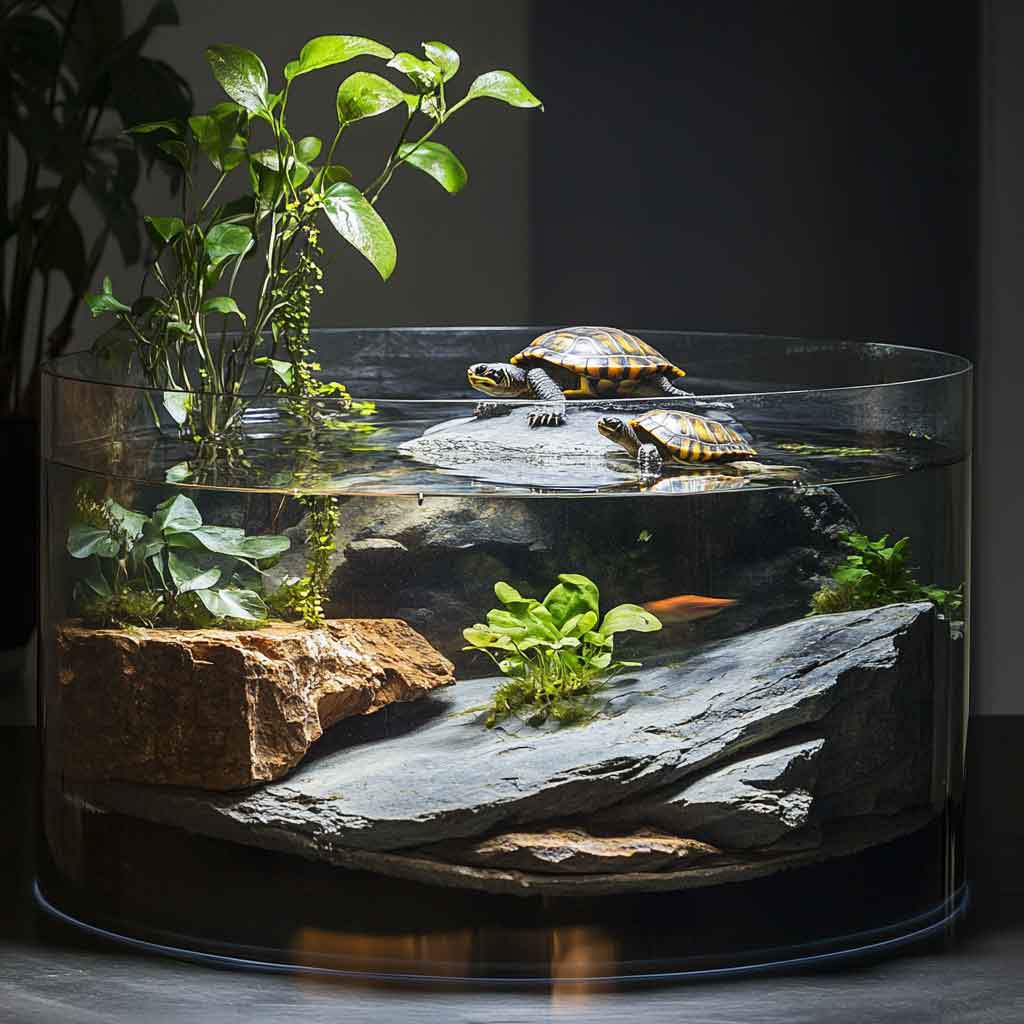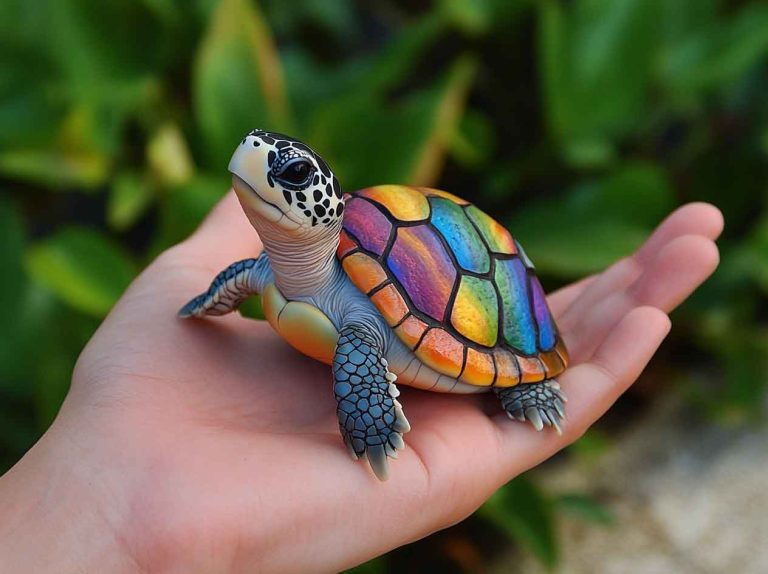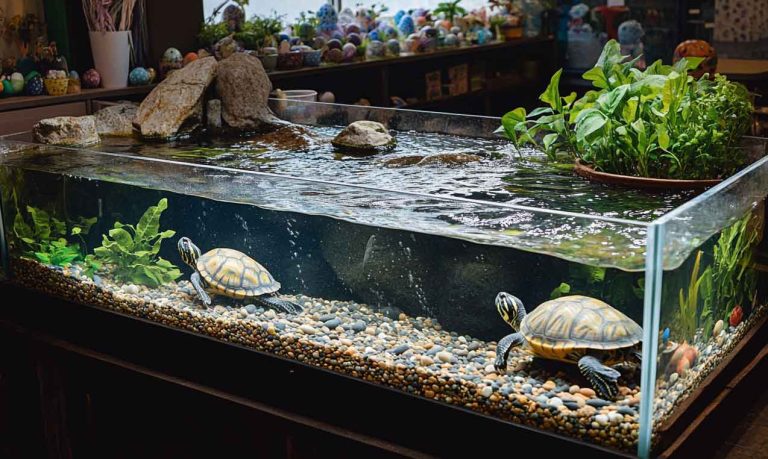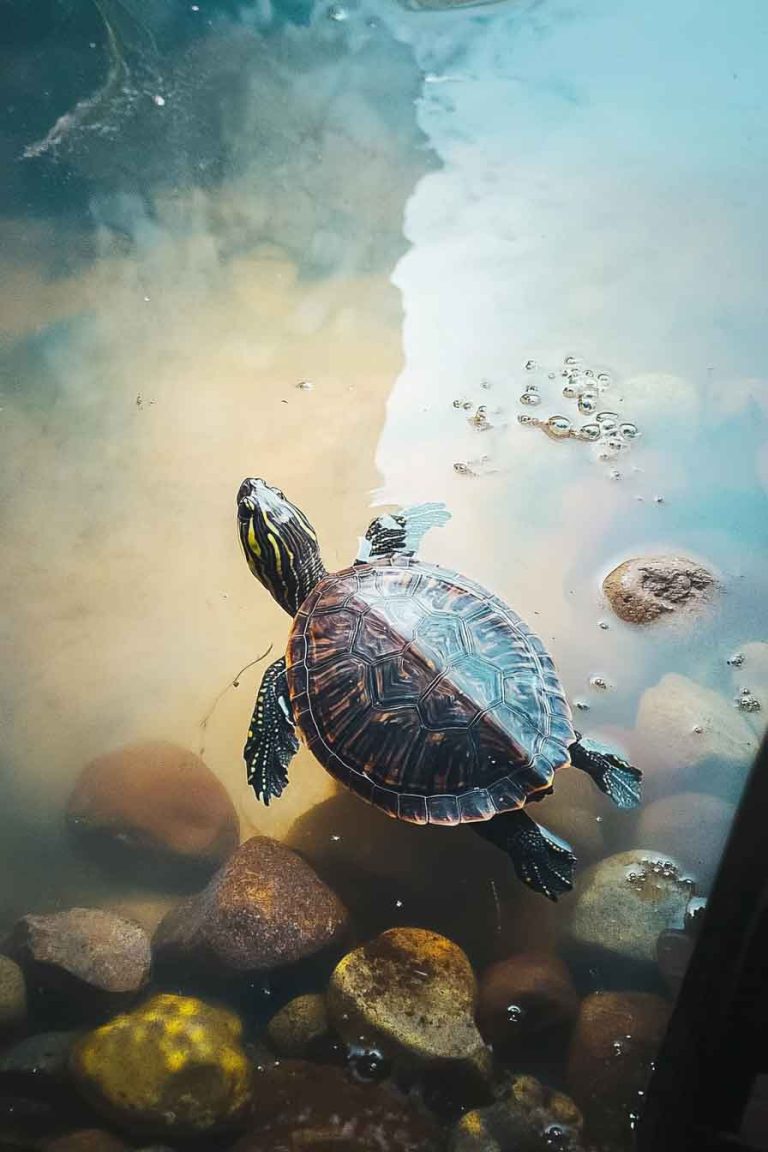Do Turtles Need Rocks In Their Tank? Benefits & Safety Tips
Turtles are fascinating pets, and creating the perfect habitat for them is key to their health and happiness. One common question among turtle owners is whether rocks are a necessary addition to their tank. To help you understand, we’ve researched this topic thoroughly and prepared this guide to explain whether turtles need rocks in their…
Turtles are fascinating pets, and creating the perfect habitat for them is key to their health and happiness. One common question among turtle owners is whether rocks are a necessary addition to their tank. To help you understand, we’ve researched this topic thoroughly and prepared this guide to explain whether turtles need rocks in their tank and why.
Do turtles need rocks in their tank? Yes, rocks can be beneficial in a turtle’s tank, but they aren’t always mandatory. Rocks provide a naturalistic environment, aid in physical health, and serve as basking or hiding spots, depending on the turtle species and tank setup. However, their necessity depends on factors like the turtle’s species, tank size, and whether alternative structures are provided.
This article dives deeper into the role of rocks in a turtle’s tank, exploring their benefits, potential risks, and how to incorporate them safely. We’ll also discuss alternatives to rocks and other essential considerations for your turtle’s habitat.
Why Are Rocks Important in a Turtle’s Tank?
Rocks can play several important roles in a turtle’s tank, contributing to both their physical and mental well-being. While not every turtle tank requires rocks, they offer unique advantages that can enhance your pet’s environment.
Benefits of Including Rocks:
1. Mimicking a Natural Habitat
Turtles in the wild live in environments with rocks, pebbles, and other natural structures. Adding rocks to a tank creates a more naturalistic setting, which can reduce stress and make your turtle feel more at home. For aquatic turtles, rocks can resemble riverbeds or lake bottoms, while for semi-aquatic or terrestrial species, they mimic rocky terrains.
2. Physical Health and Exercise
Rocks provide surfaces for turtles to climb, scratch, or rest on. Climbing over rocks can help keep a turtle’s muscles active and nails trimmed naturally. For aquatic turtles, rocks can also serve as a platform to crawl onto for basking or resting, promoting healthy movement.
3. Basking and Hiding Opportunities
Many turtles, especially aquatic and semi-aquatic species, need a dry area to bask under a heat lamp or UVB light. A large, flat rock can serve as an excellent basking spot, absorbing heat and providing a stable surface. Additionally, rocks can create hiding spots or caves, giving shy turtles a place to retreat and feel secure.
Factors to Consider:
Not all turtles benefit from rocks in the same way. For example:
- Species: Aquatic turtles like red-eared sliders may use rocks for basking, while terrestrial turtles like box turtles may use them for climbing or hiding.
- Tank Size: In smaller tanks, rocks can take up valuable swimming or moving space, so their inclusion needs careful planning.
- Alternatives: If rocks aren’t suitable, other structures like driftwood, commercial basking platforms, or artificial caves can serve similar purposes.

Are Rocks Safe for a Turtle’s Tank?
While rocks can be a great addition to a turtle’s tank, safety is a top priority. Improperly chosen or placed rocks can pose risks to your turtle’s health. Understanding how to select and maintain rocks in the tank is crucial for creating a safe and enriching environment.
Potential Risks of Rocks:
1. Sharp Edges
Rocks with rough or sharp edges can injure your turtle, causing cuts or scratches to their skin, shell, or limbs. Always choose smooth, rounded rocks, such as river rocks or pebbles, to minimize the risk of injury.
2. Tank Damage
Heavy or improperly placed rocks can crack the glass of an aquarium, especially in smaller or less sturdy tanks. To avoid this, ensure rocks are stable and placed on a soft substrate like sand or gravel to distribute their weight evenly.
3. Trapping or Crushing Hazards
If rocks are stacked or arranged in a way that they could collapse, they might trap or crush your turtle. Avoid creating unstable structures, and regularly check that rocks remain secure, especially if your turtle is a digger or likes to climb.
4. Water Quality Issues
Rocks can accumulate waste, uneaten food, or algae, which can compromise water quality if not cleaned regularly. Poor water quality can lead to health problems like shell rot or respiratory infections. Regular tank maintenance, including cleaning rocks, is essential to prevent these issues.
How to Safely Incorporate Rocks:
- Choose the Right Type: Opt for smooth, non-porous rocks like river rocks, slate, or polished pebbles. Avoid rocks that might leach minerals or chemicals into the water, such as limestone or untreated natural stones.
- Clean Thoroughly: Before adding rocks to the tank, scrub them with water and a mild vinegar solution to remove dirt, bacteria, or contaminants. Rinse thoroughly to ensure no residue remains.
- Secure Placement: Place rocks in a way that prevents them from shifting or falling. For aquatic turtles, ensure basking rocks are partially submerged for easy access.
- Regular Maintenance: Clean rocks during routine tank maintenance to prevent algae buildup or waste accumulation. Use a siphon or scrub brush to keep them clean.
Alternatives to Rocks and Final Considerations
While rocks can enhance a turtle’s tank, they aren’t the only option for creating a functional and enriching habitat. Depending on your turtle’s needs, tank setup, or personal preferences, you might consider alternatives or complementary items to ensure your pet thrives. Below, we explore these alternatives and provide final tips for maintaining a healthy turtle tank.
Alternatives to Rocks:
1. Driftwood
Driftwood is a popular choice for turtle tanks, especially for aquatic and semi-aquatic species. It provides a natural basking platform, encourages climbing, and adds an aesthetic touch. Ensure the driftwood is aquarium-safe, free of chemicals, and properly cleaned before use.
2. Commercial Basking Platforms
Many pet stores offer purpose-built basking docks or platforms designed for turtles. These are often made of safe, durable materials like plastic or resin and can be easily attached to the tank’s sides. They’re a low-maintenance option that eliminates the risks associated with natural rocks.
3. Artificial Caves or Hides
For turtles that need hiding spots, artificial caves or hides made of non-toxic materials can be a great substitute for rock structures. These are lightweight, easy to clean, and designed to be safe for aquarium use.
4. Substrate-Based Options
Instead of large rocks, you can use a substrate like smooth gravel, sand, or coconut fiber to create a natural floor for the tank. This can mimic a riverbed or forest floor while reducing the risk of injury or tank damage. Be sure to choose a substrate that’s safe for your turtle’s species and easy to clean.
Final Tips for a Turtle-Friendly Tank:
- Monitor Tank Conditions: Regularly check water temperature (ideal range: 75–85°F for aquatic turtles) and quality to ensure a healthy environment. Use a reliable filter and perform partial water changes weekly.
- Provide UVB Lighting: Turtles need UVB light to synthesize vitamin D3 and maintain shell health. If rocks or platforms are used for basking, position them under a UVB lamp for maximum benefit.
- Tailor to Species: Research your turtle’s specific needs. For example, red-eared sliders need ample swimming space and a basking area, while box turtles require more terrestrial space with hiding spots.
- Balance Space and Enrichment: Ensure rocks or alternatives don’t overcrowd the tank. Turtles need room to swim, move, and explore comfortably. Follow the rule of thumb: 10 gallons of water per inch of shell for aquatic turtles.
FAQs:
1. Can I use rocks from my backyard in a turtle tank?
No, backyard rocks may contain harmful bacteria, chemicals, or minerals that can affect water quality or your turtle’s health. Always use aquarium-safe rocks from pet stores or thoroughly clean and sterilize natural rocks before use.
2. Do terrestrial turtles need rocks in their enclosure?
Terrestrial turtles, like box turtles, don’t require rocks but can benefit from them for climbing or hiding. Ensure rocks are smooth and stable, and provide other enrichment like substrate or hides.
3. How often should I clean the rocks in my turtle’s tank?
Clean rocks during regular tank maintenance, typically every 1–2 weeks, to prevent algae, waste, or bacterial buildup. Scrub them with a brush and rinse thoroughly to keep the tank hygienic.
Final Word
Rocks can be a valuable addition to a turtle’s tank, offering benefits like a naturalistic environment, basking opportunities, and physical exercise. However, they aren’t strictly necessary, and their inclusion depends on your turtle’s species, tank size, and setup. By choosing safe, smooth rocks, maintaining proper tank conditions, and considering alternatives like driftwood or basking platforms, you can create a healthy and stimulating habitat for your turtle. Always prioritize safety and regular maintenance to ensure your pet thrives in its environment.






